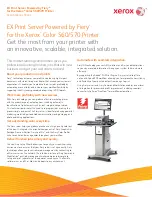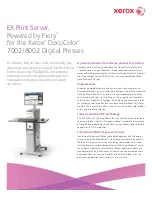
7. Press Enter to initiate volume creation.
8. When prompted, press Y to accept the warning message and create the volume.
9. If needed, return to step 2 to create additional RAID volumes.
10. When finished, select
Exit
and press Enter.
Deleting RAID volumes
To delete RAID volumes, do the following:
1. During the system startup, press Ctrl+I when prompted to enter the Intel Rapid Storage Technology
enterprise option ROM configuration utility.
2. Use the up and down arrow keys to select
Delete RAID Volume
and press Enter.
3. Use the arrow keys to select the RAID volume to be deleted and press Delete.
4. When prompted, press Y to confirm the deletion of the selected RAID volume. Deleting a RAID volume
will reset the hard disk drives to non-RAID.
5. After deleting a RAID volume, you can:
• Return to step 2 to delete additional RAID volumes.
• Create a new RAID volume. See “Creating RAID volumes” on page 35 .
• Use the up and down arrow keys to select
Exit
and press Enter.
Resetting disks to non-RAID
To reset your hard disk drives to non-RAID, do the following:
1. During system startup, press Ctrl+I when prompted to enter the Intel Rapid Storage Technology
enterprise option ROM configuration utility.
2. Use the up and down arrow keys to select
Reset Disks to Non-RAID
and press Enter.
3. Use the arrow keys and the space key to mark individual physical hard disk drives to be reset, and then
press Enter to complete the selection.
4. When prompted, press Y to confirm the reset action.
5. After resetting the hard disk drives to non-RAID, you can:
• Delete a RAID volume. See “Deleting RAID volumes” on page 36.
• Create a RAID volume. See “Creating RAID volumes” on page 35.
• Use the up and down arrow keys to select
Exit
and press Enter.
Marking disks as spare
To mark hard disk drives as spare drives, do the following:
1. During the system startup, press Ctrl+I when prompted to enter the Intel Rapid Storage Technology
enterprise option ROM configuration utility.
2. Use the up and down arrow keys to select
Mark Disks as Spare
and press Enter.
3. Use the arrow keys to locate a hard disk drive and press the space key to select or deselect the hard disk
drive. You can select multiple hard disk drives if required. Then, press Enter to complete the selection.
4. When prompted, press Y to confirm the operation.
Note:
Marking a hard disk drive as a spare drive will remove all data on the drive.
5. When finished, select
Exit
and press Enter.
Notes:
If your server has one of the following Linux operating systems installed, continue with the
corresponding actions:
36
ThinkServer TS150 User Guide and Hardware Maintenance Manual
Summary of Contents for ThinkServer TS150
Page 14: ...xii ThinkServer TS150 User Guide and Hardware Maintenance Manual ...
Page 18: ...4 ThinkServer TS150 User Guide and Hardware Maintenance Manual ...
Page 52: ...38 ThinkServer TS150 User Guide and Hardware Maintenance Manual ...
Page 116: ...102 ThinkServer TS150 User Guide and Hardware Maintenance Manual ...
Page 124: ...110 ThinkServer TS150 User Guide and Hardware Maintenance Manual ...
Page 136: ...122 ThinkServer TS150 User Guide and Hardware Maintenance Manual ...
Page 146: ...132 ThinkServer TS150 User Guide and Hardware Maintenance Manual ...
Page 147: ......
Page 148: ......















































